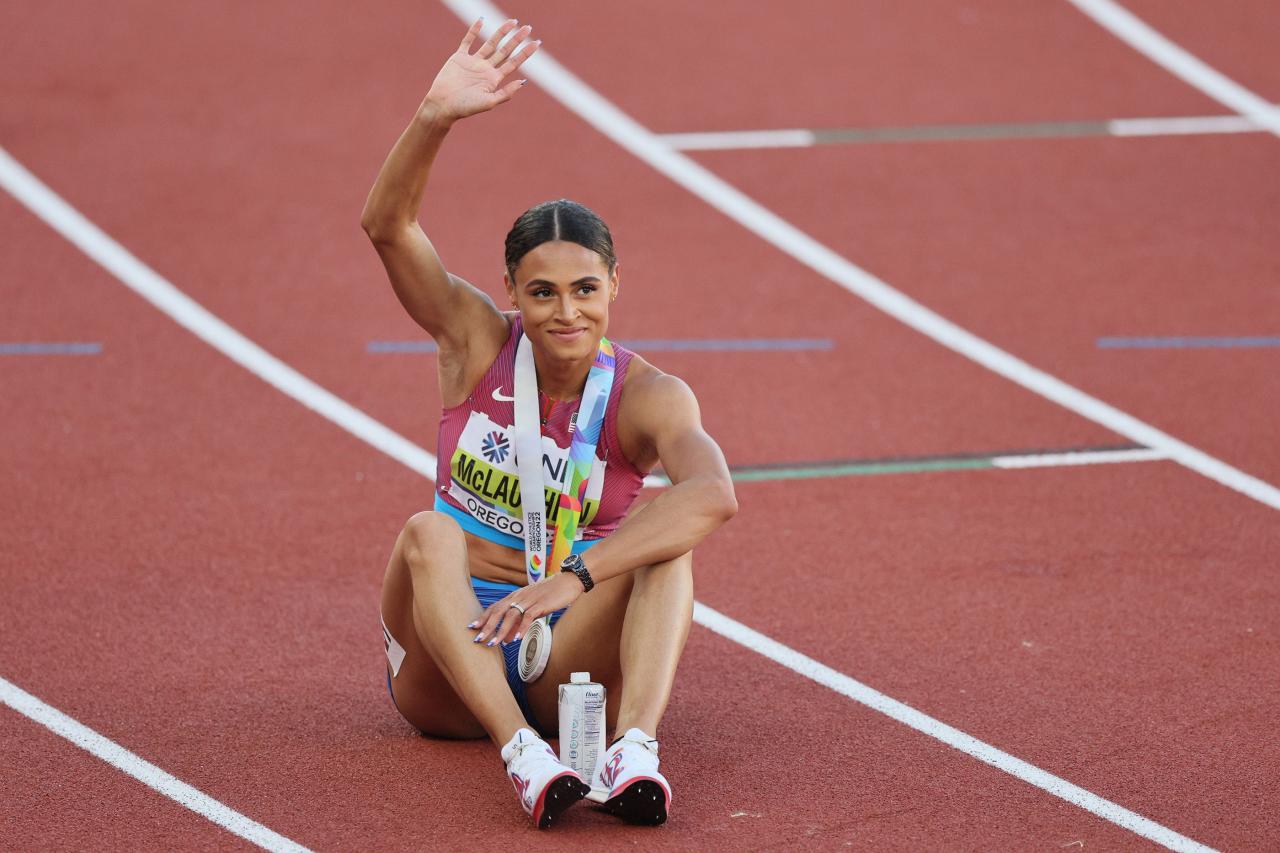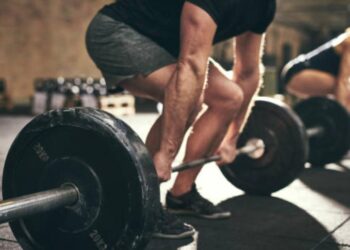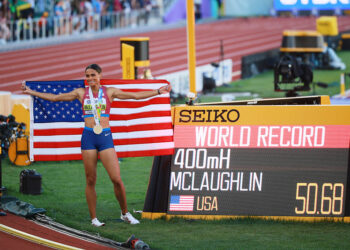Physical Conditioning and Training Methodologies

At the core of peak athletic performance lies an unwavering commitment to physical conditioning. This isn’t a one-size-fits-all approach but rather a highly individualized journey that adapts to the specific demands of each sport and the unique physiological profile of the athlete.
A. Periodization: The Science of Structured Training
Effective training is rarely linear. Instead, it follows a cyclical pattern known as periodization, a strategic approach that manipulates training variables (volume, intensity, frequency) over specific timeframes to optimize performance and minimize the risk of overtraining or injury.
A. Macrocycles: These are the longest training cycles, often spanning an entire year or even an Olympic quadrennial. A macrocycle is typically divided into several distinct phases, each with a specific objective. For instance, an athlete might begin with a general preparation phase, followed by a specific preparation phase, a competition phase, and finally, a transition or off-season phase. The overarching goal of a macrocycle is to systematically build an athlete’s physical capabilities, leading to peak performance during key competitions.
B. Mesocycles: Within each macrocycle, there are shorter, more focused blocks called mesocycles, typically lasting anywhere from two to six weeks. Each mesocycle targets a particular physiological adaptation, such as strength, power, endurance, or hypertrophy. For example, a strength-focused mesocycle might involve heavy lifting and lower repetitions, while an endurance-focused mesocycle would emphasize higher repetitions and longer durations. The careful sequencing of mesocycles ensures that different physical attributes are developed progressively.
C. Microcycles: The shortest training cycles are microcycles, usually lasting one week. These are the daily and weekly blueprints of an athlete’s training. A microcycle outlines the specific workouts, rest days, and recovery sessions for a given week. The design of a microcycle considers the athlete’s current fatigue levels, upcoming competitions, and the specific goals of the current mesocycle. Effective microcycle planning is crucial for managing training load and ensuring consistent progress.
B. Strength and Power Development
Beyond general fitness, sport-specific strength and power are critical. This involves training movements that mimic the demands of the sport, focusing on explosive power and dynamic strength rather than just maximal lifts.
A. Plyometrics: These exercises involve rapid stretching and contracting of muscles, enhancing explosive power. Think of box jumps, broad jumps, and medicine ball throws. Plyometrics train the nervous system to react more quickly and powerfully, crucial for activities like sprinting, jumping, and throwing.
B. Olympic Lifting: Movements like the snatch and clean & jerk develop full-body power, coordination, and technique. These complex lifts engage multiple muscle groups simultaneously, improving neuromuscular efficiency and the ability to generate force rapidly.
C. Resistance Training Variations: Incorporating diverse resistance training methods, such as eccentric training (focusing on the lowering phase of a lift), isometric training (holding a position), and accommodating resistance (using bands or chains), can target different strength qualities and stimulate new adaptations.
C. Endurance and Cardiovascular Health
For sports requiring sustained effort, robust cardiovascular fitness is non-negotiable. This isn’t solely about running long distances but about developing the body’s ability to efficiently deliver oxygen to working muscles and remove waste products.
A. High-Intensity Interval Training (HIIT): Alternating short bursts of intense exercise with brief recovery periods significantly improves aerobic and anaerobic capacity. HIIT is highly effective for mimicking the stop-and-go nature of many team sports and improving the body’s ability to recover quickly between efforts.
B. Zone Training: Utilizing heart rate zones to target specific physiological adaptations, such as aerobic base building (lower heart rates) or lactate threshold improvement (higher heart rates). This precise approach ensures that training is effective for the desired outcome, preventing overtraining or undertraining.
C. Sport-Specific Drills: Integrating endurance components directly into sport-specific drills helps build stamina relevant to game situations. For example, a soccer player might perform continuous dribbling drills, while a swimmer might do long sets with minimal rest.
Mental Fortitude and Psychological Edge
Physical prowess alone is insufficient for peak performance. The mind is a powerful tool, and mastering it can unlock an athlete’s true potential, especially under pressure.
A. Visualization and Imagery
Mentally rehearsing successful outcomes, perfect techniques, and overcoming challenges can prime the brain for real-world performance. Athletes often close their eyes and vividly imagine themselves executing a perfect play, scoring a winning goal, or acing a serve. This mental practice strengthens neural pathways and builds confidence.
B. Goal Setting: The Roadmap to Success
Specific, measurable, achievable, relevant, and time-bound (SMART) goals provide direction and motivation. Athletes should set both short-term process goals (e.g., “improve my free throw percentage by 5% in the next month”) and long-term outcome goals (e.g., “win the national championship”). This structured approach helps maintain focus and track progress.
C. Mindfulness and Focus
Learning to stay present and focused, particularly amidst distractions or high-stakes situations, is crucial. Techniques like meditation, deep breathing exercises, and sensory awareness drills can help athletes develop a heightened sense of awareness and control over their thoughts and emotions. This allows them to “stay in the zone” and perform optimally.
D. Stress Management and Resilience
The pressures of competition, training, and public scrutiny can be immense. Athletes must develop coping mechanisms for stress, setbacks, and failures. This includes positive self-talk, seeking support from coaches or sports psychologists, and reframing challenges as opportunities for growth. Resilience is the ability to bounce back from adversity, a hallmark of elite performers.
Nutrition and Hydration
What an athlete consumes directly impacts their energy levels, recovery rate, and overall performance. Nutrition is not just about eating; it’s about strategic fueling.
A. Macronutrient Optimization
Balancing carbohydrates, proteins, and fats according to training demands is vital.
A. Carbohydrates: The primary energy source for high-intensity exercise. Athletes require adequate carbohydrate intake to replenish glycogen stores in muscles and the liver, preventing fatigue. Timing carbohydrate intake (e.g., before, during, and after exercise) is critical.
B. Proteins: Essential for muscle repair, growth, and recovery. Athletes have higher protein needs than sedentary individuals. Quality protein sources, consumed consistently throughout the day, support muscle protein synthesis.
C. Fats: Provide sustained energy, support hormone production, and aid in nutrient absorption. Healthy fats from sources like avocados, nuts, and olive oil are crucial for overall health and performance.
B. Micronutrient Essentials
Vitamins and minerals play critical roles in energy production, immune function, and bone health. Deficiencies can severely impair performance. Athletes should focus on a nutrient-dense diet rich in fruits, vegetables, and whole grains to ensure adequate intake of essential vitamins and minerals like iron, calcium, Vitamin D, and B vitamins.
C. Hydration Strategies
Even mild dehydration can significantly impair performance, leading to fatigue, reduced coordination, and increased risk of heat illness. Athletes must develop personalized hydration plans that account for training intensity, duration, environmental conditions, and individual sweat rates. Electrolyte balance is also important, especially during prolonged or intense exercise.
D. Performance-Enhancing Supplements (with Caution)
While a whole-food diet is the foundation, some evidence-based supplements (e.g., creatine, caffeine, beta-alanine) can offer marginal benefits under specific conditions, always under professional guidance. However, the vast majority of supplements are ineffective or even harmful, and athletes must be wary of false claims and contamination risks. Always consult with a sports nutritionist or medical professional before taking any supplements.
Recovery and Regeneration
Training breaks down the body; recovery rebuilds it stronger. Neglecting recovery is a common pitfall that leads to overtraining, injury, and burnout.
A. Sleep: The Ultimate Performance Enhancer
Adequate, high-quality sleep (7-9 hours for most adults, often more for athletes) is non-negotiable for physical and mental restoration. During sleep, growth hormone is released, muscle repair occurs, and cognitive functions are consolidated. Sleep deprivation impairs reaction time, decision-making, and immune function.
B. Active Recovery
Light exercise (e.g., walking, cycling, swimming) on rest days can promote blood flow, reduce muscle soreness, and aid in metabolic waste removal without adding significant stress. This is often more beneficial than complete inactivity for recovery.
C. Myofascial Release and Stretching
Foam rolling, massage, and dynamic/static stretching improve flexibility, reduce muscle tightness, and enhance range of motion, reducing injury risk. Regular mobility work helps maintain healthy tissue quality and proper movement patterns.
D. Hydrotherapy and Cryotherapy
Techniques like ice baths, contrast baths (alternating hot and cold water), and cold plunges can reduce inflammation, numb pain, and potentially accelerate recovery by promoting circulation. While research on their definitive long-term benefits is ongoing, many athletes report subjective improvements.
E. Nutrition for Recovery
Post-exercise nutrition, particularly a combination of carbohydrates and protein, is crucial for replenishing glycogen stores and initiating muscle repair. The “anabolic window” post-workout is a critical time to consume these nutrients for optimal recovery.
Cutting-Edge Advancements

Modern sports science leverages technology to provide unprecedented insights into athlete performance and health.
A. Wearable Technology
GPS trackers, heart rate monitors, and accelerometers provide real-time data on training load, intensity, speed, distance, and physiological responses. This data allows coaches to precisely manage training, prevent overtraining, and optimize individual programs.
B. Biomechanical Analysis
High-speed cameras and motion capture systems analyze movement patterns, identifying inefficiencies, potential injury risks, and areas for technical improvement. This detailed feedback helps athletes refine their technique for maximal performance and injury prevention.
C. Performance Data Analytics
Advanced algorithms and artificial intelligence process vast amounts of data to identify trends, predict performance, and tailor individual strategies. This allows for data-driven decision-making in coaching, recruitment, and game planning.
D. Recovery Technology
Devices like compression garments, percussive therapy tools, and advanced sleep trackers contribute to optimizing an athlete’s recovery process, providing objective measures of rest and restoration.
Support Systems and Environment
An athlete’s journey to peak performance is rarely a solo endeavor. The surrounding environment and support network play a pivotal role.
A. Coaching Excellence
A skilled coach is more than just an instructor; they are a mentor, motivator, strategist, and guide. The best coaches possess deep technical knowledge, strong communication skills, an understanding of sports psychology, and the ability to adapt their approach to individual athletes. They foster a culture of continuous improvement and resilience.
B. Sports Science Teams
Elite athletes often have access to a multidisciplinary team including sports psychologists, nutritionists, physiotherapists, strength and conditioning specialists, and medical doctors. This integrated approach ensures all aspects of an athlete’s well-being and performance are addressed holistically.
C. Supportive Environment
A positive and supportive training environment, whether it’s a team, family, or community, fosters a sense of belonging and reduces stress. Athletes thrive when they feel valued, understood, and encouraged. This includes financial, emotional, and logistical support.
D. Injury Prevention and Rehabilitation
Proactive injury prevention strategies (e.g., proper warm-ups, cool-downs, strength imbalances correction) are crucial. When injuries do occur, prompt and effective rehabilitation under the guidance of medical professionals is vital for a safe and complete return to play. Ignoring minor aches or rushing back too soon can lead to chronic issues.
Conclusion
Unlocking athletes’ peak performance secrets is not a destination but a continuous journey of learning, adaptation, and relentless dedication. It transcends mere physical training, embracing the intricate interplay of mental fortitude, precise nutrition, strategic recovery, and the intelligent application of technology. The champions of tomorrow will be those who not only push the boundaries of their physical capabilities but also master the inner game, prioritize their well-being, and leverage every available resource to refine their craft. By meticulously integrating these diverse elements, athletes can ascend to unprecedented heights, setting new standards for excellence and inspiring generations to come. The pursuit of peak performance is a testament to the enduring human spirit, always striving for more, always reaching higher.












